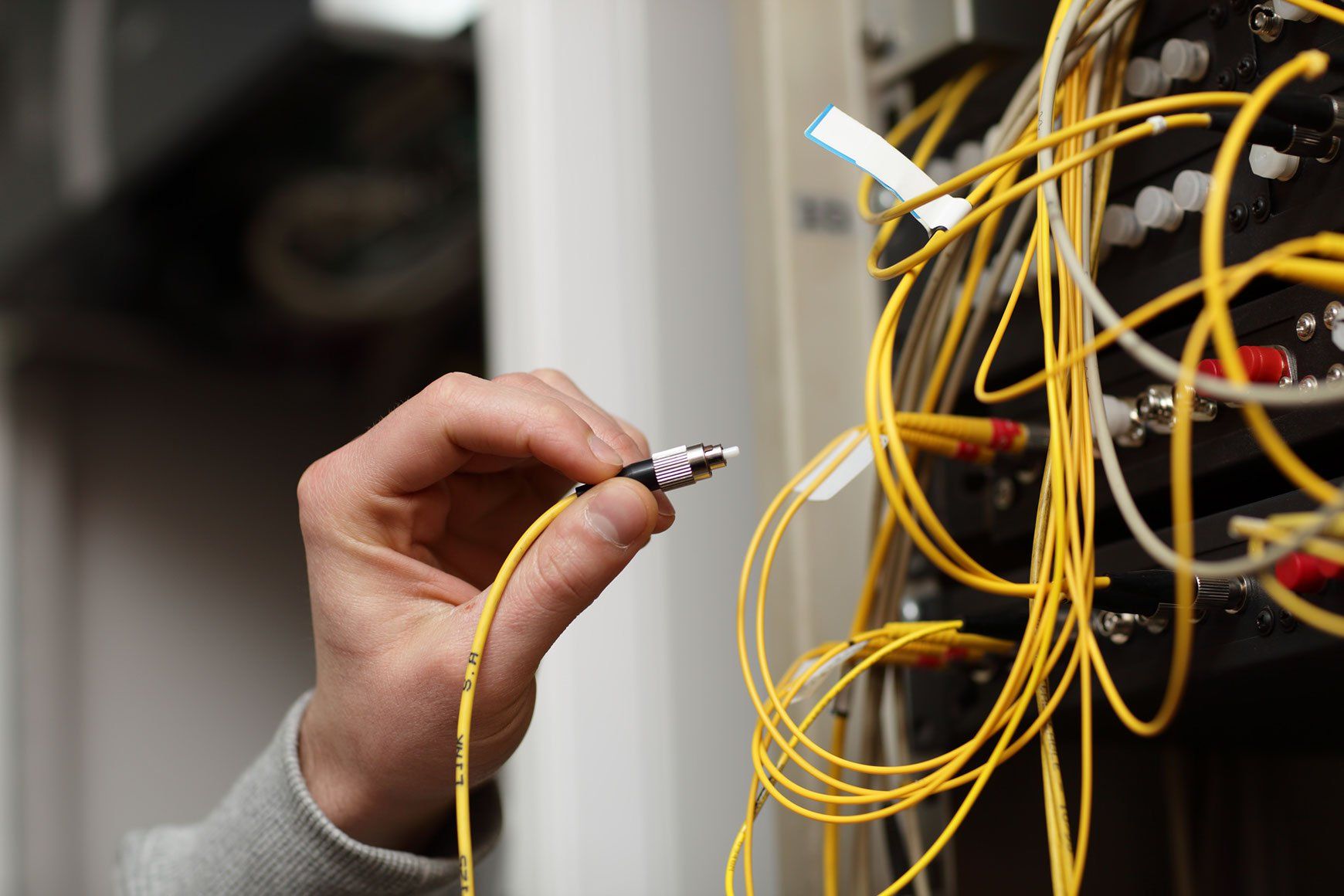Fast & Reliable Fibre Optic Cable Installations in Penrith
Fibre-optic cable is now the gold standard for data connectivity, offering much higher speeds and reliability than other methods such as copper cabling. Whether you're running a business or want fast, reliable data connections for your home, fibre-optic cabling is your best option for data connectivity. MKD Electrical can supply and install fibre optic cabling for your unique specifications. We will then carry out the terminations and testing end to end, ensuring that you get the best possible connection.

What is Fibre-Optic Cabling?
As opposed to most types of cable, fibre-optic cable (also known as optical fibre) uses light instead of electricity to transmit signals. Obviously, light is the fastest method of transmitting information, but fibre-optic cable has the additional advantage of not being subject to electrical interference. Thus, you can run it just about anywhere. Since light meets very little resistance, you can run the fibre-optic cable over very long distances without having to boost or clean the signal.
Fibre optics also involves speed. You can send signals at more than 10 GB per second. And even at that velocity, the signal is much cleaner than traditional data cabling. Comparing fibre-optic cabling to coaxial cabling is sort of like comparing digital information to analogue information. (It really isn't much of a comparison. Fibre optics is far more impressive.)
The fibre-optic cable must have a light source that generates a signal. Connectors, repeaters, couplers, and other components, which exist in most standard networking systems, serve to route, boost, and deliver the signal. First, you need something that will help you transmit light through the cable. This something is called a transmitter. Transmitters come in two varieties: LED (light-emitting diode) and laser. The transmitter includes a light source and a driver, which modulates and uses an electrical signal to power the light source. Think of a fibre-optic cable as an unusually long laser that carries a light beam along a controlled path rather than emitting it through the air.
Finally, you need a receiver that will convert light signals back into electrical signals. Receivers possess photodetectors that convert light into electrical signals, amplifiers that boost signals, and output devices that transmit those signals.
The Advantages of Fibre Optics
- There's little interference from EMF devices, and fibre-optic cables don't interfere with other devices.
- Fibre-optic cables are difficult to tap because they don't emit signals that can be monitored. They are very secure.
- Fibre optics is faster than most other transmission mediums.
- The signal has a constrained loss rate, which means that very little of a signal is lost over rather long distances.
- Fibre-optic cables are safe to handle because high voltages aren't involved.
- Fibre-optic cable is easier to install.
Contact us today on 02 4727 6445 to find out more about our fibre optic cabling services.




